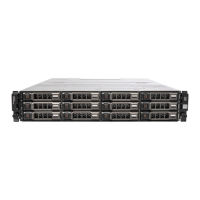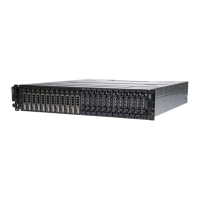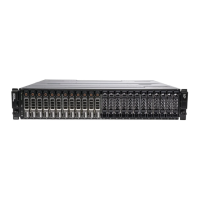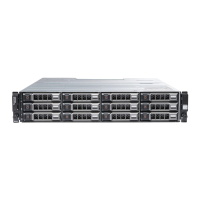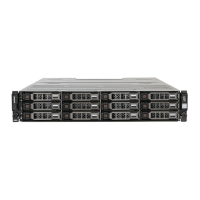Planning for Hyper-V: PowerVault™ MD3200 and MD3200i Series of Arrays
Page 14
• If you are booting from a pass-through physical disk, you must store the VM files in a
different location.
• For every VM, you must create a separate pass-through physical disk. You cannot share
a pass-through physical disk for two VMs.
• The physical layout of the pass-through physical disk is the same as for any physical
server.
Note: For the highest performance, use pass-through physical disks but only as data devices.
If you need the best flexibility, assign fixed-size VHDs.
For more information about how to maximize performance for different applications on the Dell
PowerVault MD3200 and MD3200i storage arrays, go to this website:
http://www.dell.com/downloads/global/products/pvaul/en/pvault_MD3200_whitepaper.pdf
Note: The configuration of your physical disk layout for performance on the Dell PowerVault
MD3200 or MD3200i storage array depends on the application requirements of your VM
(child partition), not on the Hyper-V parent server.
Directly-Mapped iSCSI Virtual Disks to the VM (Dell PowerVault MD3200i
Storage Array)
You can easily transfer the virtual disk from a physical server to the VM. However, transferring the
virtual disk reduces the number of servers that are connected to the Dell PowerVault MD3200i storage
array. Every VM uses exactly one server partition. VSS-based backup from the parent does not include
the directly mapped iSCSI LUNs of the child partition. Booting also is not possible unless you use third-
party software. The Dell PowerVault MD3200i storage array requires only a software initiator; the iSCSI
HBA is not supported with the Dell PowerVault MD3200i storage array. Only software initiators are
supported with the Dell PowerVault MD3200i storage array.
Note: You can use direct mapping for data devices that were originally used on a physical
server or for data devices that are being moved back to a physical server.
Considerations for the VM Child Partition
Usually, when you create VHDs, you can store your VM configuration files in the same location as the
VHDs. If you plan to use multiple VMs, you can create one virtual disk on your Dell PowerVault MD3200
or MD3000i storage array for storing your configuration files and assign the data physical disks
separately. Depending on the performance required for your different VMs, you might use one MD3200
or MD3000i virtual disk for multiple VM data disks. When performing capacity calculations, add
approximately 200 MB to the VM configuration data for each VM. When configuring the VM, booting is
supported only on virtual IDE adapters, not on the virtual SCSI adapter. However, you can assign an
MD3200 or an MD3000i virtual disk as an IDE device to the VM, and performance is not affected.
If you plan to use pass-through physical disks as boot disks and data disks, you must store your VM
configuration files in a different location. This location can be the local physical disk of your server, or
an MD3200 or MD3000i virtual disk, which is available to the parent and formatted with NTFS. You can
assign a pass-through device only after creating the VM. To assign a pass-through device, select Assign
Hard Drive Later during the VM creation process. After the VM is created, change the VM options to
Assign the Pass-Through Device.
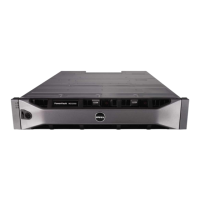
